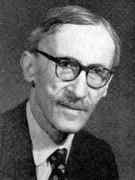Person: Lévy, Paul

Paul Lévy was a French mathematician who, after starting out as an expert on functional analysis, made important advances in probability theory.
Mathematical Profile (Excerpt):
- Lucien Lévy had studied at the École Polytechnique from 1872 to 1877 and then had a career as a professor of mathematics, first at the lycée of Rennes and then in Paris, at the lycée Louis le Grand.
- Paul attended three lycées in Paris, the lycée Montaigne from 1895 to 1898, the lycée Louis le Grand from 1898 to 1902 and the lycée Saint Louis from 1902 to 1904.
- At the lycée Montaigne, Lévy was taught literature and arts subjects and was certainly not the best student in his class, having three brilliant fellow-students, Jacques Massigli, Pierre Lachièze and Marc Bloch, who took the top three places.
- Émile Mâle was the professor of rhetoric at the lycée Louis le Grand when Lévy began studying there later in 1898.
- It was mathematics that fired Lévy's passion at the lycée Louis le Grand.
- In his final year at the lycée Saint Louis, 1903-04, Lévy was taught by Émile Blutel (1862-1932).
- Lévy was placed first for entry to the École Normale Supérieur and second for entry to the École Polytechnique in the Concours d'entrée for the two institutions.
- After graduating in first place, Lévy took a year doing military service before studying for an engineering degree at the École des Mines in 1907.
- As he explains, it was Hadamard who was the major influence in determining the topics on which Lévy would undertake research.
- Lévy undertook military service and was asked to use his mathematical skills in the war effort.
- George Humbert, who had taught at the École Polytechnique from 1895, was one of the professors when Lévy was a tutor but he became seriously ill and he asked Lévy to substitute for him and take over part of his teaching commitments for session 1918-19.
- Humbert's poor health led him to resign and Lévy became a full professor of analysis at the École Polytechnique in 1920.
- Lévy remained at the École Polytechnique, with certain interruptions described below, until he retired in 1959.
- If there is one person who has influenced the establishment and growth of probability theory more than any other, that person must be Paul Lévy.
- Though they are evidently not developed in the detail needed (we must not forget that Lévy took the charge of the teaching at the drop of a hat), they indicate how Lévy perceived probability on the eve of his exceptional second mathematical career.
- They contain the seeds of the studies Lévy would pursue with virtuosity for 40 years: convergence in distribution, sums of random variables, the connection between mathematical probability and physics.
- Not only did Lévy contribute to probability and functional analysis but he also worked on partial differential equations and series.
- It was relocated to Lyon, in Vichy France, and Lévy moved to Lyon and began teaching.
- Up to this point we have not mentioned that Lévy was Jewish since it was not relevant.
- Legislation of 3 October 1940 required all Jews to be dismissed from their teaching and, on 19 December 1940 Lévy received notice that he could no longer perform his duties.
- The situation became worse in the summer of 1942 and Lévy, anticipating events, left Lyon and went to live with his son-in-law Robert Piron, in Montbonnot, near Grenoble in the Italian controlled region of France.
- Already by the time Lévy wrote this letter, part of the École Polytechnique was operating again in Paris (it had returned in April 1943), but some teaching was still taking place in Lyon for escaped prisoners, Jewish students and others who could not, at that time, return to Paris.
- Moreover, as we have seen, his teaching tasks were also gradually reduced, and for some months in 1943, living in precarious silence in the Italian zone near Grenoble, Paul Lévy had nothing to do other than mathematics while waiting for better days.
- His luck was to remain in contact with Fréchet who played for him the role of a private registration journal and could also sometimes serve as a hub between Lévy and other mathematicians.
- Lévy wrote ten books, the main ones being: Leçons d'analyse fonctionnelle Ⓣ(Lessons in Functional Analysis) (1922), Calcul des probabilités Ⓣ(Calculation of probabilities) (1925), Théorie de l'addition des variables aléatoires Ⓣ(Addition theory of random variables) (1937; 1954), and Processus stochastiques et mouvement brownien Ⓣ(Stochastic processes and Brownian motion) (1948).
- In 1963 Lévy was elected to honorary membership of the London Mathematical Society.
- Lévy died in 1971 at the age of 85.
- Thus, after having been one of the main precursors of functional analysis, Paul Lévy was the great creator of the theory of probability.
- Let us add for the record that this very classic course which was little modified until 1957 did not mean that Paul Lévy was losing interest in modern developments in mathematics since he had the courage and the elegance to undertake, in the last two years of his teaching, a redesign of his course to introduce the most recent language and methods.
Born 15 September 1886, Paris, France. Died 15 December 1971, Paris, France.
View full biography at MacTutor
Tags relevant for this person:
Analysis, Geometry, Statistics
Thank you to the contributors under CC BY-SA 4.0! 

- Github:
-

- non-Github:
- @J-J-O'Connor
- @E-F-Robertson
References
Adapted from other CC BY-SA 4.0 Sources:
- O’Connor, John J; Robertson, Edmund F: MacTutor History of Mathematics Archive
